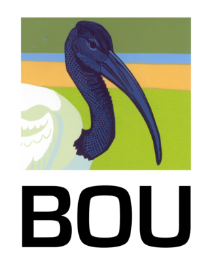
The British Trust for Ornithology (BTO) could be considered to have started off on the right foot when it comes to female representation in the study of birds. Shortly after the Trust was founded in 1932, a group of eminent naturalists wrote an open letter to The Times to appeal for funding, one of the signatories being renowned bird photographer, Emma Turner; the idea that a woman was involved proved so shocking that she was accidentally misgendered when these events were subsequently reported in The Telegraph. While attitudes have, thankfully, progressed during the intervening century, it would be naive to suggest that those hundred years have brought us to the point of equity, and a number of recent blog posts, including A Girl and Birds, published by BTO, and On Being a Bird, published recently by BOU, have shone a harsh light on the challenges that women participating in the BTO’s Ringing Scheme can face.
A commitment to equity
The BTO’s operational model is completely reliant on the volunteers who collect the data for our surveys, many of which, like the Ringing Scheme, are part-funded by the Government via the Joint Nature Conservation Committee (JNCC), in recognition of the vital role the resultant data play in monitoring the UK’s wildlife. It therefore makes practical sense to appeal to as broad a group of potential surveyors and members as possible. That said, it is a moral obligation that lies at the heart of our desire to be accessible to all: conserving our nation’s wildlife is vital for the entirety of the human population, and everyone should have equal opportunity to contribute.
So, what are we doing about it? The first step was embedding the importance of embracing everyone in the organisation’s culture. The current BTO Strategy places equal weighting on ‘People’, ‘Birds’ and ‘Science’, leading to the establishment of a ‘Becoming More Inclusive’ working group and implementation of bespoke training events, such as anti-oppression workshops, aimed at increasing staff awareness and knowledge. In parallel, the trust sent a clear zero tolerance message regarding discriminatory behaviour via the establishment of a Code of Conduct that everyone – employees, members and surveyors alike – is expected to adhere to, while the associated complaints processes were thoroughly reviewed and highlighted.
The Ringing Scheme gender balance
The number of women holding a ringing permit has increased significantly in recent years and, in age groups up to and including 40 years of age, female ringers now outnumber their male counterparts. As the author of the On Being a Bird blog points out, however, the situation is very different for the over 40s and, as age is generally correlated with progression through the Ringing Scheme, this results in a significant over-representation of men amongst Trainers, the most senior permit category who undertake the essential role of teaching and supporting their peers to acquire and hone new skills. The degree to which this relationship is driven by gender biases in recruitment versus those in retention is, at present, unknown but my colleagues are currently negotiating funding for analytical work to explore these mechanisms in more detail.
We cannot afford to rest on any laurels, however, as some female participants clearly still face barriers. The developments listed above aim to tackle intentional discrimination, which we would hope was already becoming increasingly rare, but unintentional biases that negatively influence accessibility may still exist. Training has, for example, traditionally involved turning up in remote areas at odd times of day and night to meet relative strangers, a scenario that inarguably generates much greater risk for women than it does for men. To help identify examples of unwitting exclusion and advise on making ringing more inclusive, the volunteer Ringing Committee has established a working group whose first task has been to disseminate a questionnaire to ringers. This was circulated just over a month ago and, at the time of writing, had received almost 200 responses. The feedback will be used to develop, amongst other things, guidance material aimed at ringing session organisers. The BTO is not alone in our search to improve the situation, and we are liaising with colleagues from Spanish, French and Finnish ringing schemes under the EURING banner to pool our knowledge and co-develop plans.
We are also very aware of the positive impact that increased visibility can have; while male ringers may generally be accepting and welcoming, the presence of female ringers provides the clearest reassurance to other women that this is indeed the case. BTO staff are increasingly working to support ringing conference organisers in developing gender-balanced programmes, and to ensure that a diverse range of authors are contributing to newsletters, noting that both tasks should become progressively easier as representation of women throughout the scheme increases.
We are equally keen to address direct physical barriers, a good example being the recent development of ringing plier adapters. Larger rings, such as those used on many seabirds, can be difficult to fit for volunteers with smaller hands; increasing leverage can make a big difference, and this is the aim of the new design, currently being trialled. The adapted pliers will also help those with lower hand strength due to disabilities such as arthritis.
Next steps
We hope that the approach illustrated in this blog will build confidence in the BTO’s determination to move towards a more equitable gender balance, and we have been extremely pleased with, and grateful for, the positive response from the wider ringing community. It is all very much a work in progress, however, and we would welcome receipt of further feedback via ringing@bto.org. Many of the examples given here are transferable to a wider range of under-represented groups, and we are currently working with a group of academics to identify potential barriers to participation for members of the LGBTQIA+ community, so watch this space!
If you are interested in contributing to the #BOUdiversityBlog, please get in touch with us via this form which ensures anonymity for those who seek it.
Image credit: CCO PD pixabay.com





